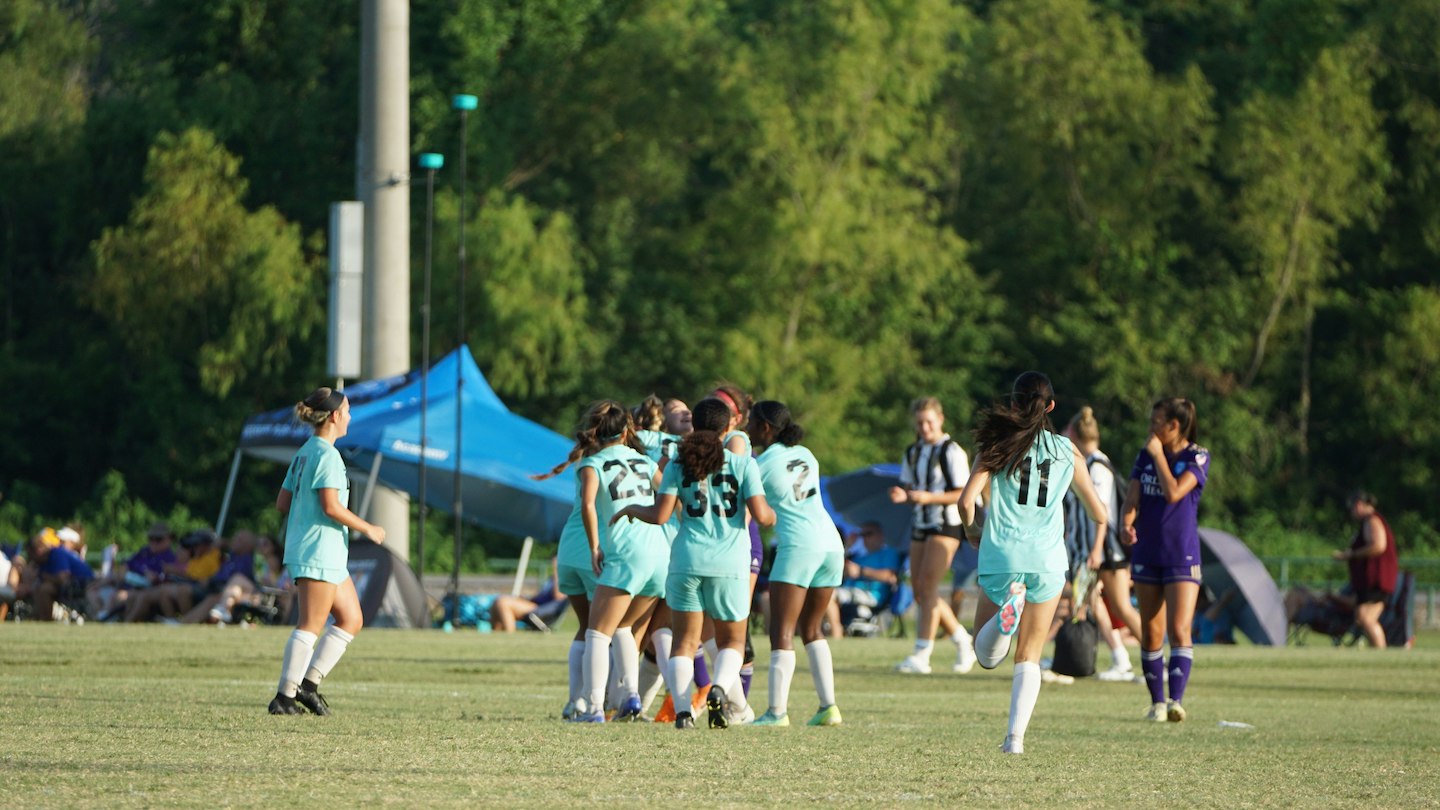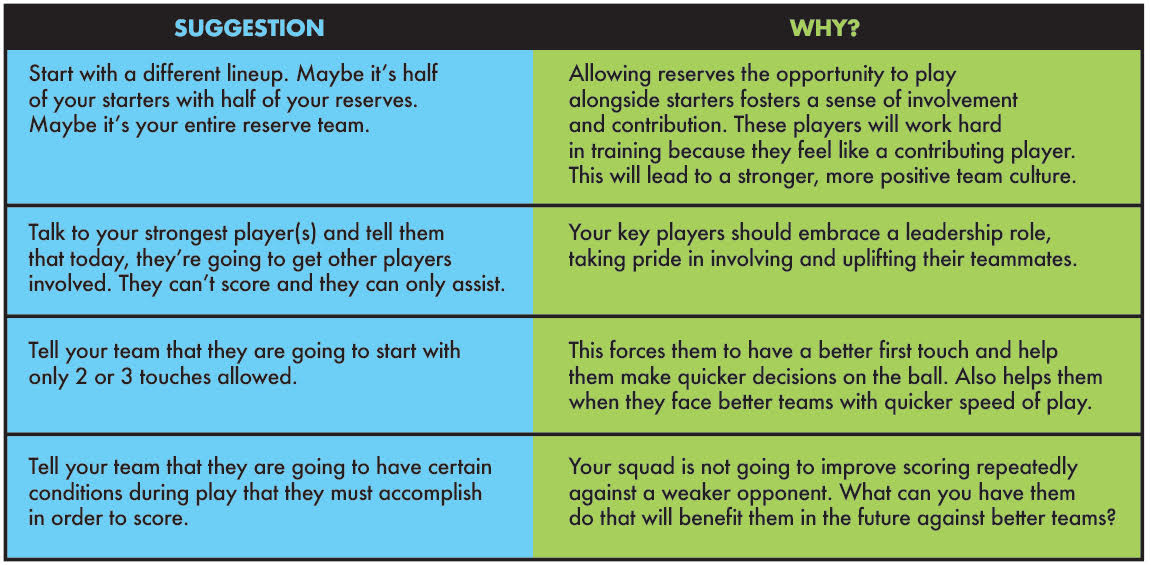I received many good ideas to my article on Preventing Lopsided Scores. Perhaps the best advice came from longtime coach Jeff Geller, who has been coaching in the Capital District Youth Soccer League (CDYSL) and high school soccer for the past 25 years and is currently the coach of the Girls-Under-8 Saratoga-Wilton Gotham Girls and the Modified Boys Soccer coach in the Saratoga Springs City School District.
Jeff told me that he authored the following article a year ago after he saw high school teams consistently run up the score on weaker opponents to either demoralize them or to help their players break school records. Here are Jeff’s ideas:
Creating Value and Demonstrating Sportsmanship in Unbalanced Games, by Jeff Geller
As we continue to compete and strive for victory in the games we coach, it’s essential to remember that sportsmanship should always be at the forefront of our coaching philosophy. While we are all dedicated to winning and achieving success on the field, it’s equally important that we respect our opponents and maintain the integrity of the competition. We all understand that soccer is a game that thrives on intensity and drive, but it’s equally important that we balance that drive with the responsibility we have to foster a positive, respectful environment for both our players and the teams we face. Whether in victory or defeat, let’s ensure we’re setting the right example for our athletes in how we conduct ourselves and how we approach the game.
Sometimes, it’s apparent before a game even starts that the result is going to be one-sided, while other times it only becomes clear once the game is underway. Below are a few tips and strategies for managing situations where your team is much stronger than the opposition, and ways to ensure the game remains beneficial for both teams involved.
One strategy to combat lopsided victories is to communicate and educate your players and parents before you find yourself in a one-sided game. Communicate with your team and parents early on in the season that you may be making changes to your team and/or asking certain things of them in easier contests to help create an environment where both teams will be able to take something away from the game.
Many coaches score 5, 6, or 7 goals against their opponent and only then start to make changes to the game in an attempt to keep it respectable. They put attackers on defense and defenders on attack, but the goals keep coming. They put all their subs in, but the goals keep coming. They tell their team to stop scoring, and now that’s not fun for anyone. They tell their team to make 10 passes before scoring, but now they’re playing passes without a purpose and the weaker team is doing nothing but chasing the ball around. So, what can you do? As a coach in this situation, you always want to try and tweak the game conditions by making it more difficult for your team to score without taking away the ability to score.
If you know before the game that the team you’re about to play is much weaker, possibly by their scorelines against other teams or maybe you played them earlier in the season, you can:
Sometimes you recognize soon after the whistle blows that you have the superior squad that day. Maybe you score a goal or two very quickly. Maybe you see that your team is technically and tactically superior and will control the match. As soon as you make the determination that you could easily win the game, you should be thinking about how you can tweak the game conditions to make it beneficial for both teams. Some suggestions to make it more difficult for your team to score without taking away the ability to score include:
• Making lineup changes sooner than later. Don’t wait until you’re up 5-0. It’s too late at that point.
• Limiting the touches your players have on the ball. Make the players think and play quicker.
• Having your team play the ball back to your goalkeeper after winning possession. Whether you win the ball back in the defensive, middle, or attacking third, the ball must be worked back to the goalkeeper before the team can go to goal. This forces your team to play back and then have to go the entire length of the field to score.
• Having your team complete X number of combinations such as overlaps or give-and-gos before going to goal. Playing a weaker opponent gives us a good opportunity to rehearse some of these common patterns of play.
• Giving the team a passing pattern they must complete before going to goal. Again, playing a weaker opponent gives us a good opportunity to rehearse some common patterns of play. Maybe you want them to work on playing balls into the feet of the target player, maybe you want them to work on playing through balls in behind the defense to the weak side midfielder, maybe it’s overlapping runs by the outside back followed by a cross into the box. Identify the area of the game your team needs to improve and create on-field scenarios that allow for targeted practice.
• Only allowing attempts on goal from outside the box.
• Only allowing attempts on goal with a player’s weaker foot.
• Only allowing attempts on goal with a one-time finish.
• Playing short on all restarts.
Removing players from the field of play (playing down) should be considered a last resort, only after all other efforts to maintain a competitive scoreline have been exhausted. Playing down can be perceived as disrespectful, and our goal is to keep all players on the field while challenging them to score under tough conditions. If despite the challenges your team continues to score easily, then it may be time to consider removing a player or more from the field of play. This document highlights the balance between competing to win and maintaining sportsmanship. While it’s crucial to aim for success, we must also ensure that we keep the game respectful for all involved, no matter what the score. As coaches, we set the tone for how our athletes approach the game, and it’s important that we instill values of respect, fairness, and integrity in every match.









